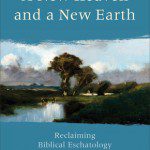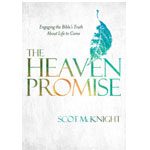 In his book Mapping the Origins Debate: Six Models of the Beginning of Everything Gerald Rau considers four different aspects of origins – the origin of the universe, the origin of life, the origin of species, and the origin of humans. The first, the origin of the universe, is in many respects the least controversial although significant differences in perspective remain. The chapter begins with a brief overview of the scientific evidence for the age of the universe.
In his book Mapping the Origins Debate: Six Models of the Beginning of Everything Gerald Rau considers four different aspects of origins – the origin of the universe, the origin of life, the origin of species, and the origin of humans. The first, the origin of the universe, is in many respects the least controversial although significant differences in perspective remain. The chapter begins with a brief overview of the scientific evidence for the age of the universe.
Einstein and the Expanding Universe. Rau points out that Einstein assumed that the universe was stable, not expanding or collapsing. As a result he added a cosmological constant to his equations to bring them in line with this expectation. One of the most readable discussions of this I’ve found is in the book God’s Equation: Einstein, Relativity, and the Expanding Universe by Amir D. Aczel. Without the cosmological constant Einstein’s equation predicted an expanding universe, and he was convinced that this meant that something was missing from his theory. But the data quickly showed that the universe was, in fact, expanding. Einstein’s paper with the cosmological constant appeared in 1917. In that same year Vesto Slipher reported that some of the stars he observed were rapidly moving away from us. By 1929 astronomers had come to realize that the Milky Way is but one of many galaxies (not known in 1917) and Edwin Hubble found that galaxies are receding from us at a velocity proportional to their distance. Einstein abandoned the cosmological constant, and several other preconceptions about the very early universe. It was, he felt, an embarrassment and his greatest blunder. (By the way, The images in this post are from the Hubble Space Telescope – named in honor of Edwin Hubble.)
Today the cosmological constant has made its way back into the theory – not to make the universe stable, but because the newest data suggests that the expansion of the universe is accelerating. The cosmological constant is a parameter with a value that must be determined by experiment and observation. The story is an excellent example of the way preconceptions can shape theory and the scientific endeavor, and how experiment, observation, and community operate in the scientific pursuit of understanding. Aczel’s book is a fascinating case study well worth the time to read (it has a few equations – but these can be safely ignored, they need not be understood).
The current best estimate for the age of the universe is 13.8 billion years – as determined by the European Space Agency’s Planck Mission (see this article for a fascinating discussion of the results emerging from this mission).
How is the origin of the universe considered in the six models Rau has outlined? (See the previous post Models, Models, Models for a description of these models.) Four of the models, nonteleological evolution, planned evolution, directed evolution, and old earth creationism have no difficulty dealing with the age and origin of the universe. All of these agree that there is a creator, although perhaps an impersonal deistic creator in the case of nonteleological evolution (evolution with a creator but no designed purpose).
Old earth creationism takes a concordist view of scripture and interprets the term “day” as referring to an age, an unspecified period of time. The other three approaches take a nonconcordist view of scripture. While old earth creationism holds that concordance between the Bible and scientific discoveries provides evidence for the inspiration of scripture, both planned and directed evolution (and more nuanced positions around these) find no new science revealed in scripture. The revelation in scripture uses ancient near eastern cosmology to make theological points, not scientific points. Those who hold to nonteleological evolution are more likely to see creation account in Genesis as “mere symbol,” a human produced myth.
The other two views – Naturalistic Evolution and Young Earth Creation have some difficulty dealing with the evidence for the origin of the universe. For those who take a rigorously naturalistic view appeal to the supernatural is nothing less than a cop-out, there must be some “natural” explanation. The origin and fine-tuning of the universe is something of a conundrum. For those who feel that scripture clearly teaches a young earth, the apparent age of the universe is a puzzle that needs to be solved.
 Apparent Beginning. Rau suggests that the origin of the universe provides problems for a purely natural view that are not present in any view that admits of the existence of the supernatural.
Apparent Beginning. Rau suggests that the origin of the universe provides problems for a purely natural view that are not present in any view that admits of the existence of the supernatural.
Although naturalistic evolution accepts big bang cosmology as the mechanism by which the universe came to have its present structure, it does not view the initial singularity as the point of origin. Since, according to this model, there is no supernatural (and thus nothing that cannot ultimately be investigated and explained by science) the energy present at the beginning must have come from some other physical source. Currently the most popular explanation is the idea of a multiverse. (p. 76)
Multiverse models postulate the existence of an often infinite number of parallel or sequential universes. A recent article in Scientific American New Physics Complications Lend Support to Multiverse Hypothesis gives an idea of the problem and the “solution.” Our universe may be natural, with perfectly logical reasons for all the “fine-tuned” constants we observe, making life inevitable. But the may not be natural, it may be “unnatural.”
Physicists reason that if the universe is unnatural, with extremely unlikely fundamental constants that make life possible, then an enormous number of universes must exist for our improbable case to have been realized. Otherwise, why should we be so lucky? Unnaturalness would give a huge lift to the multiverse hypothesis, which holds that our universe is one bubble in an infinite and inaccessible foam. According to a popular but polarizing framework called string theory, the number of possible types of universes that can bubble up in a multiverse is around 10^500. In a few of them, chance cancellations would produce the strange constants we observe. (SA article p. 1)
In one possible scenario then, the fabric of reality suddenly shifts and a bubble of a space-time universe erupts (the Big Bang), the result of a fluctuation. The Big Bang that formed our space-time universe, or any new universe, is an “apparent beginning” erupting out of the fabric of reality. “The properties of this new universe are determined by chance: the amount of energy unleashed during the fluctuation.” The cosmological constant may play a big role here. When it is tiny, as in our universe, life will be possible. When it is large (positive or negative) the universe will expand or collapse too rapidly for the development of life. A universe with a small cosmological constant is “unnatural” or “atypical.”
Rau says of multiverse models:
All are mathematically and logically possible, but all posit other universes fro which there is no empirical evidence. Thus the existence of these multiverses is no less a matter of faith for atheists than the existence of a supernatural is for theistic models. (p. 77)
 Apparent Age. The other model that struggles with the question of the origin of the universe is the young earth creationist view. The origin itself is not a problem, of course. In the young earth view, as in the nonteleological, planned, and directed evolution, and old earth creation views, the universe exists, and is finely tuned for life, because the Creator God made it so. The young earth view does have a problem, however, with the abundant evidence for the age of the universe (13.8 billion years) and the age of the earth (4.5 billion years). Because the fundamental assumption is that the Bible inerrantly places creation some 6000 to 10000 years ago over the course of six 24-hour days, the apparent evidence for age must somehow be wrong.
Apparent Age. The other model that struggles with the question of the origin of the universe is the young earth creationist view. The origin itself is not a problem, of course. In the young earth view, as in the nonteleological, planned, and directed evolution, and old earth creation views, the universe exists, and is finely tuned for life, because the Creator God made it so. The young earth view does have a problem, however, with the abundant evidence for the age of the universe (13.8 billion years) and the age of the earth (4.5 billion years). Because the fundamental assumption is that the Bible inerrantly places creation some 6000 to 10000 years ago over the course of six 24-hour days, the apparent evidence for age must somehow be wrong.
Two different explanations are common.
According to the older apparent-age explanation, … God, being a master artist, created a masterpiece so realistic that no matter how carefully we look, the appearance of age is perfect and consistent. This explains all of the evidence for things that appear older than ten thousand years, whether on earth or in the heavens, including the light of stars created en route to earth. (p. 79)
One implication of this view is that God created a world with such a perfect history that the only way we can know it isn’t true is because he told us so in the Bible. Some find theological problems with such a view. Rau notes that it has been largely dropped in favor of another view in more recent YEC writing.
Currently, many scientists within the YEC community have adopted a different interpretation of the evidence, the universe is expanding out of a white hole. According to this explanation, our galaxy is thought to be near the center of a finite, bounded universe. Being closer to the center of gravity, the gravitational time dilation predicted by general relativity causes time to run slower here than it does further from the center of gravity. Thus during the fourth day of the creation week, “while one ordinary day was elapsing on earth, billions of years worth of physical processes were taking place in distant parts of the universe.” As a result the stars appear very old, even though the earth is young. … This explanation also appeals to apparent age, but proposes a mechanism by which the stars and earth could appear to be different ages. (pp. 79-80)
This “white hole” model, Rau notes, has been criticized by Christians with appropriate expertise on the ground that the math does not work. Most non-Christians pay little attention to it.
How does the origin of the universe pose a problem for theistic or naturalistic assumptions about the nature of reality?
What role does assumption and preconception play in the development of any theory?
In this post there are three different examples of a role that preconceptions play in the development of a theory of origins. (1) Einstein’s assumption that the universe is stable led to the introduction of the cosmological constant. (2) The naturalist assumption that something out of nothing is counter intuitive and that the fine-tuning of the universe must have a natural cause leads to the multiverse hypothesis. (3) The assumption that scripture teaches a young earth leads to hypotheses of apparent age, with analogy to art and/or the development of the white-hole proposal.
When is it appropriate to question the preconception rather than the theory?
If you wish to contact me directly, you may do so at rjs4mail[at]att.net
If interested you can subscribe to a full text feed of my posts at Musings on Science and Theology.















